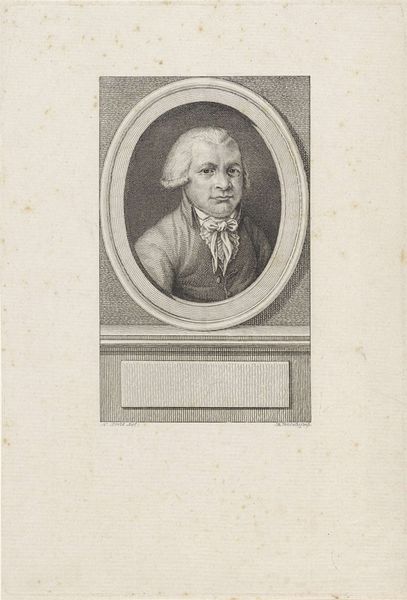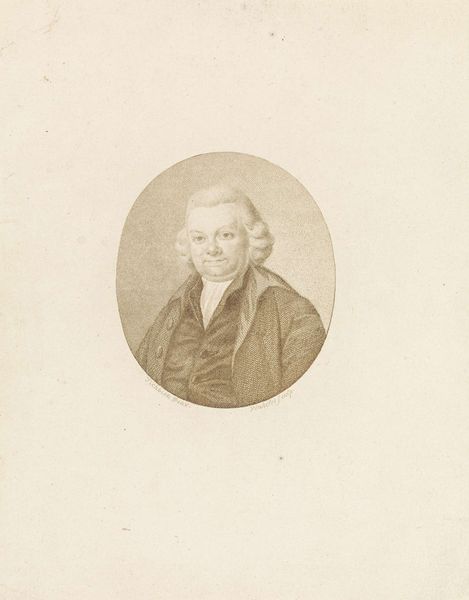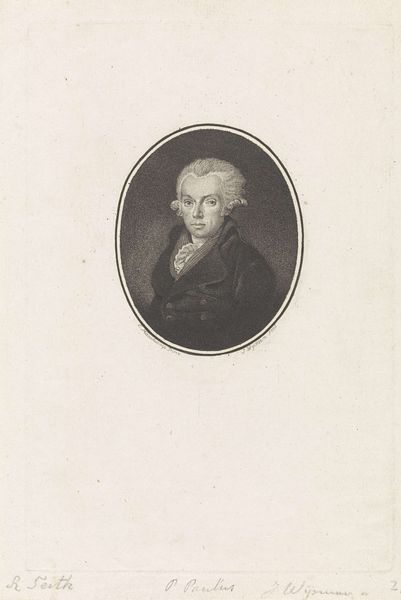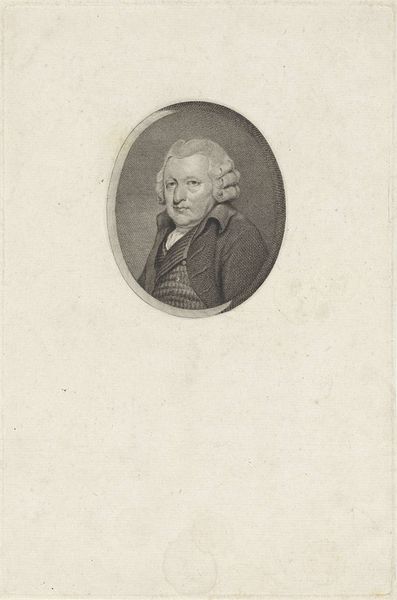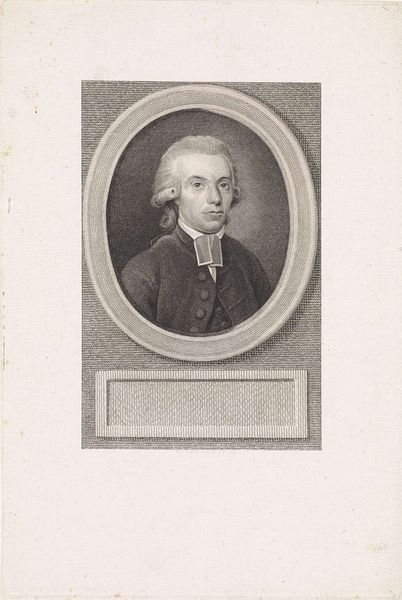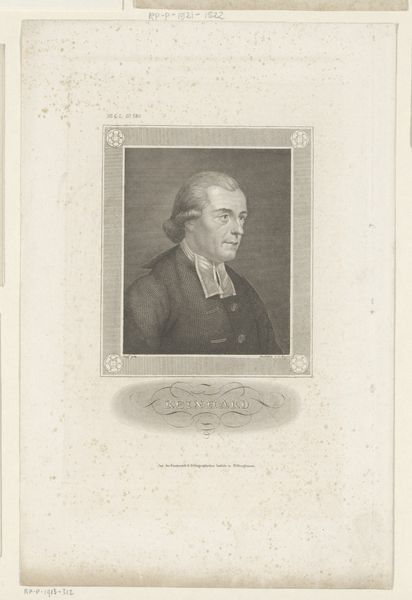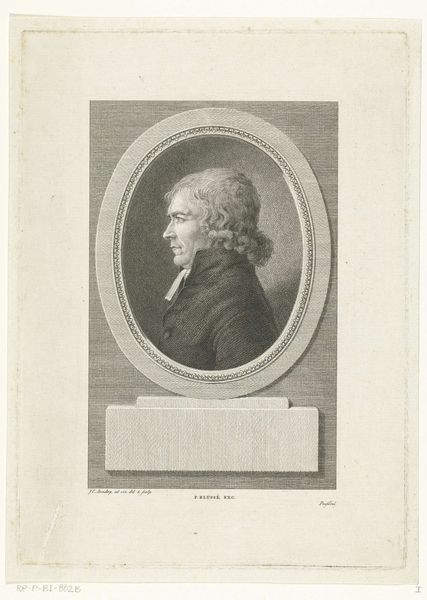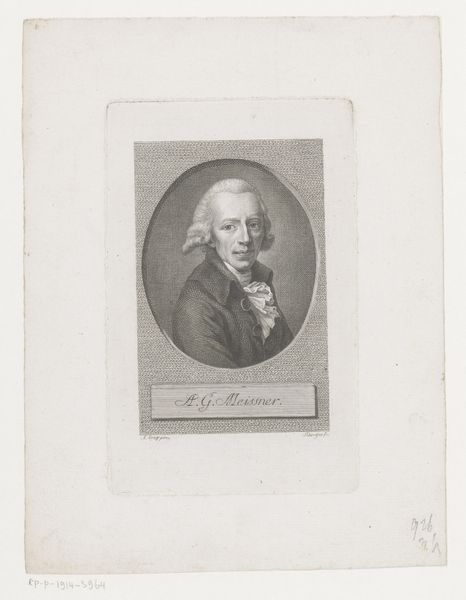
Dimensions: height 253 mm, width 171 mm
Copyright: Rijks Museum: Open Domain
Editor: This is "Portret van Jeronimo de Bosch" by Reinier Vinkeles, dating roughly from 1786 to 1809. It's a graphite and engraving piece, and what strikes me is the detail achieved with what seem like simple materials. What do you see in this portrait from a materialist perspective? Curator: For me, it's the intersection of artistry and the burgeoning print industry. Vinkeles wasn't just creating an image; he was participating in a system of production and dissemination. The engraving process itself – the labor, the tools, the economics of printmaking – they are central to understanding the work. Consider, how many impressions could one plate make? Editor: So, you’re focusing on how the engraving facilitates broader accessibility to art, moving beyond unique paintings for the elite? Curator: Precisely! The choice of materials - graphite and engraving - isn't arbitrary. It speaks to the potential for mass reproduction, shifting art from a luxury object to a more widely consumed image. Also consider the social context. What role did portraiture play in constructing identity and social status during this period? And how does the accessibility of printed portraits democratize, or perhaps just shift, those power dynamics? Editor: That’s interesting. So, even the seemingly simple lines and shades of graphite are loaded with implications about production, distribution, and even social class? Curator: Exactly! The engraving becomes a form of industrial production. The material choices and process affect who could view the work, how, and where. This opens questions about labour, capital, and consumption of images in that time period. Editor: I never really considered how deeply the means of production could impact our reading of a portrait. Curator: It changes the whole discussion! It makes us less interested in judging aesthetic merits but more interested in analysing networks. What was initially "just" a portrait unveils economic, social, and technological implications. Editor: It provides a new lens to view something familiar. Thank you.
Comments
No comments
Be the first to comment and join the conversation on the ultimate creative platform.
